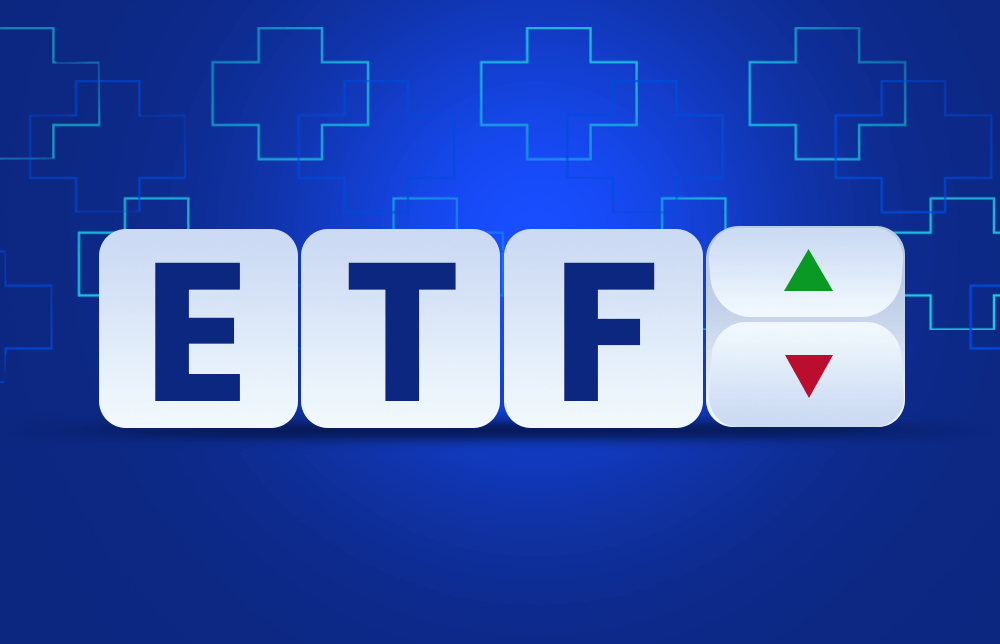Single-Stock Leveraged ETFs Guide: All You Need to Know
Date Modified: 29/12/2024
Exchange-traded funds (ETFs) are versatile financial products available in many types and may be a good addition to your CFD trading portfolio.
This article explores Single-Stock Leveraged ETFs, one of the newer forms.
Let's dive in:

TL;DR
- ETFs track assets like stocks and indices traded on stock exchanges.
- Single-stock ETFs focus on one stock and offer leveraged (2x or 3x returns) or inverse (opposite performance) options.
- Leveraged ETFs amplify gains and losses and are generally suitable for short-term traders, not long-term investing.
- Inverse ETFs profit from stock declines, which is best for short-term trends.
- Trading these ETFs can be done with CFDs.
What Are ETFs?
To understand Single-Stock Leveraged ETFs, it's important to first grasp how ETFs work.
ETFs are investment funds that track assets like indices and individual stocks. Their value is derived from the performance of the underlying assets.
As the name suggests, ETFs are traded on stock exchanges, much like individual stocks. You can read more about ETFs in our article "Understanding ETFs: What Is an ETF".
What Are Single-Stock ETFs, and How Do They Work?
Unlike traditional ETFs, single-stock ETFs are designed to track the performance of a single stock.
They offer both leveraged and inverse trading opportunities, providing investors with various tools to navigate market volatility.
Types of Single-Stock ETFs
Single-stock ETFs come in different types, with the main ones being:
- Leveraged Single-Stock ETFs: These aim to deliver a multiple of the daily return of the underlying stock, typically 2x or 3x.
- Inverse Single-Stock ETFs: These ETFs are designed to deliver the opposite daily performance of the underlying stock.
While they can magnify gains, they also amplify losses, making them riskier than traditional ETFs.
Additionally, they are generally suitable for short-term traders looking to speculate on short-term price movements but not ideal for long-term investing due to the compounding effects over time.
Lastly, leveraged single-stock ETFs can be segmented into long and short positions. Long-leveraged ETFs aim to amplify returns by buying a stock, while short-leveraged ETFs seek to profit from a stock's decline by betting against it.
For example, if you believe Nvidia's stock (NVDA) will fall, you can buy an inverse ETF that tracks NVDA. If the stock price falls, the inverse ETF will rise, allowing you to profit.
However, these ETFs are volatile and often considered more suitable for short-term trading, as their performance can diverge over time due to daily rebalancing and compounding.
A Deeper Dive: What are Leveraged Single-Stock ETF
Leverage can be an enticing tool for traders and investors aiming to amplify potential gains. However, it also increases the risk of greater losses, as any gains are mirrored by proportional losses.
Moreover, leveraged single-stock ETFs are designed to magnify the daily price movements of a single stock, typically by a factor of two or three.
These funds use derivatives and borrowing strategies to amplify returns when the stock performs well.
They are primarily suited for short-term traders aiming to capitalise on rapid price movements, not for long-term investors.
How to Trade Single-Stock Leveraged ETFs with CFDs
Trading Single-Stock Leveraged ETFs via Plus500's Contracts for Difference (CFDs) allows you to speculate on the price movements of these ETFs without owning the underlying ETFs.
With CFDs, you can buy if you expect the ETF price to rise or sell if you anticipate it will fall.
Furthermore, since leverage can amplify both gains and losses, managing risk is crucial.
You can read more about CFD trading in our article titled "What Is CFD Trading."
Popular Single-Stock Leveraged ETFs & Examples of a Leveraged Single-Stock ETF
Google Long 2X ETF
This ETF aims to deliver twice the daily return of Google's stock. If Google's stock rises by 1%, the ETF targets a 2% gain (before fees and expenses), and conversely, if the stock falls by 1%, the ETF aims for a 2% loss.
Nvidia Short 1X ETF
This ETF seeks to provide the daily inverse performance of Nvidia's stock, targeting a return of -100%. If Nvidia's stock drops by 1%, the ETF aims to rise by 1%. It's a non-leveraged inverse ETF, suitable for those anticipating a short-term decline in Nvidia's stock.
Nvidia Short 2X ETF
This ETF targets twice the inverse performance of Nvidia's stock. For every 1% decrease in Nvidia's stock, the ETF aims to increase by 2%. It carries additional risk due to leverage, making it more volatile than non-leveraged inverse ETFs.
Nvidia Long 2X ETF
It seeks to deliver twice (200%) the daily performance of Nvidia's stock. If Nvidia rises by 1%, the ETF seeks a 2% increase. It's intended for daily trading, not long-term holding. The use of leverage makes it riskier and suited for experienced traders.
Tesla Long 2X ETF
This ETF seeks to deliver twice the daily return of Tesla's stock. If Tesla rises by 1%, the ETF targets a 2% gain (before fees and expenses).
Tesla Short 1X ETF
This ETF seeks to provide the inverse performance of Tesla's stock. If Tesla falls by 1%, the ETF aims to increase by 1%.
Tesla Short 2X ETF
This leveraged inverse ETF seeks to deliver twice the inverse performance of Tesla's stock. For every 1% drop in Tesla's price, the ETF aims to rise by 2%.
Meta Long 2X ETF
It aims to provide twice (200%) the daily return of Meta Platforms Inc. (META). This leveraged fund is designed for short-term trading, magnifying exposure to Meta's stock but carrying increased risk due to daily compounding and volatility. It is not suitable for long-term investment.
Advantages of Single-Stock Leveraged ETFs
- Amplified Gains: They provide the potential for higher returns compared to the underlying stock.
- Short-Term Trading: They offer a way to speculate on short-term price movements in specific stocks.
- Diversification: While focusing on a single stock, these ETFs can still be part of a broader portfolio.
Risks of Single-Stock Leveraged ETFs
- Amplified Losses: Due to leverage, losses can exceed the original investment, especially with market volatility.
- Market Volatility: Stock fluctuations can lead to unpredictable results, especially for short-term trading.
- Not Suitable for Long-Term Holding: These ETFs are designed for short-term trades, not long-term investments.
Conclusion
In conclusion, Single-Stock Leveraged ETFs can be powerful tools for traders looking to amplify their exposure to specific stocks in the short term. While they offer the potential for significant gains, they also carry high risks, especially due to their leveraged nature and market volatility. These ETFs are best suited for experienced investors with a clear short-term strategy, as they are not intended for long-term holding. Understanding the risks and rewards is crucial before diving into these investment vehicles.
FAQs
A Single-Stock Leveraged ETF uses financial derivatives to amplify the daily returns of a specific stock, often by a factor of 2x or 3x.
Pros include amplified gains and short-term trading opportunities; cons are increased risk, volatility, and unsuitability for long-term investing.
The largest single-stock ETF often varies, but examples include those tracking major companies like Apple, Nvidia, or Tesla.
Yes, Nvidia can be traded through leveraged single-stock ETFs that aim to amplify its daily performance.
Related News & Market Insights
Get more from Plus500
Expand your knowledge
Learn insights through informative videos, webinars, articles, and guides with our comprehensive Trading Academy.
Explore our +Insights
Discover what’s trending in and outside of Plus500.
Stay up-to-date
Never miss a beat with the latest News & Markets Insights on major market events.

